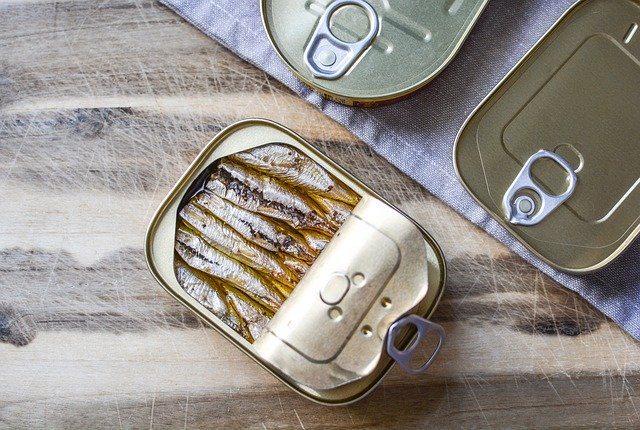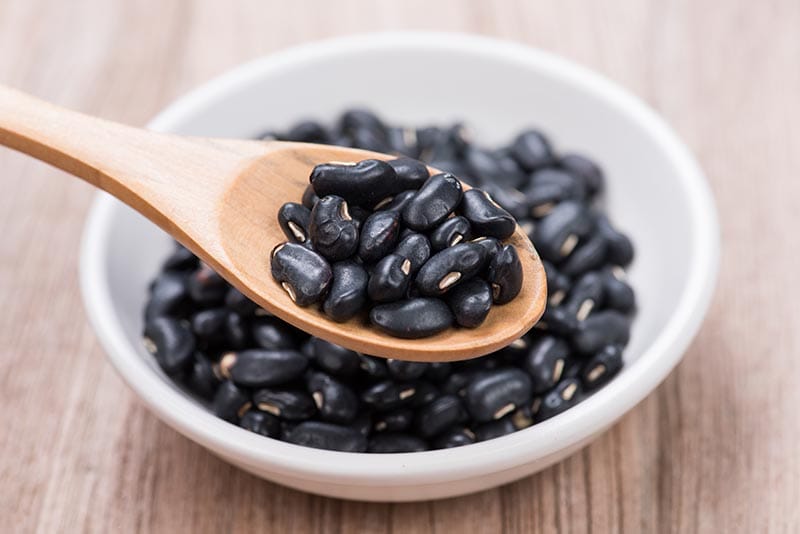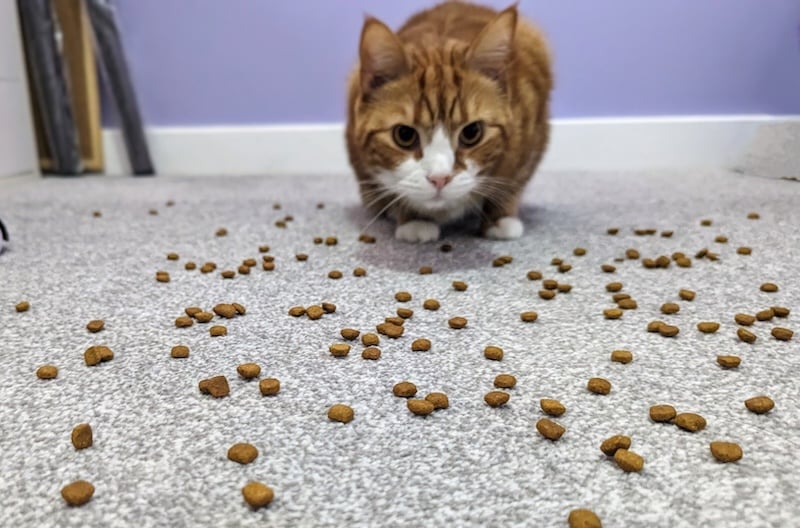Magnesium has a huge role to play in the normal functioning of your cat’s body, and a lot will start to go wrong without it. It’s a mineral that should be present in the correct concentration in your cat’s food, which is why it’s important to feed them nutritionally balanced and complete, high-quality cat food. Unfortunately, there are some cases where a cat may need a little more magnesium in their diet to prevent a deficiency.
It is not necessary to give your cat extra magnesium unless your vet has recommended it, as too much of this mineral in your cat’s diet can be as harmful as too little. If you want to avoid multivitamins and supplements and would prefer to add natural forms of this mineral to their diet, then giving your cat safe food sources of magnesium is your next best option. While magnesium deficiency is not common in cats, to help you on this journey, we’ve listed some foods that are safe and an excellent source of magnesium for your cat.

Before You Start
It’s important to know what a magnesium deficiency in your cat can look like in order to be proactive and do something about it. Below are some of the symptoms in animals and people:
- Muscle pain
- Weakness
- Depression
- Muscle trembling
- Confusion
- Convulsions
- Loss of muscle control
If your cat is showing signs of a magnesium deficiency, it’s important to get them diagnosed by your vet, which they’ll do through a blood test. This will eliminate accidentally overlooking any other health conditions that your cat may have that similarly display themselves. Your vet will also be able to give you advice on how to care for your cat and how to adjust their diet according to their individual needs.
Chat with your vet about feeding your cat food sources that are high in magnesium and whether that will be enough for them. In some cases, your cat may have an underlying health condition that is causing the deficiency and will require further treatment and care than a diet change.
8 Vet-Approved Food Sources of Magnesium for Cats
1. Fish

Cats love fish, which is why it is present in many cat food recipes. It also contains many nutrients that your cat needs. Salmon, halibut, Atlantic mackerel, and Atlantic pollock are different types of fish that are high in magnesium.
Before feeding fish to your cat, make sure it’s cooked and has all the bones removed to prevent contamination and damage to their intestinal lining. Ensure that it is fed to your cat plain, without any herbs and spices, as these could be toxic to your cat. It should also only be fed as an addition to your cat’s diet and never make up your cat’s entire diet.
Apart from providing your cat with magnesium, fish is also packed with omega fatty acids, which hydrate your cat’s skin and gives their coat a silky feel and healthy shine. Fish is also high in protein and is packed with other vitamins and minerals that are beneficial to your cat.
2. Black Beans

Although all beans aren’t recommended for cats, black beans are safe to eat and are high in magnesium. However, cats need a diet mostly made up of animal protein to thrive, so only give black beans as a small snack every now and then. Too much may leave your cat with an upset stomach. Further, some cats may refuse this treat altogether.
3. Brown Rice

Brown rice can offer benefits from the magnesium and other vitamins and minerals that it contains. Unfortunately, brown rice is often difficult for your cat to digest, and they may become bloated and gassy. White rice is a bit easier to digest. Always make sure to boil the rice and never offer it to your cat raw.
4. Pumpkin

Pumpkin is high in fiber and often listed as one of the ingredients inside many cat food recipes for this very reason. It can help treat gastrointestinal issues but isn’t always the easiest ingredient for your cat to digest.
Along with magnesium, pumpkin contains potassium, vitamins A, K, and C, and phosphorous. It should be given to your cat cooked and plain. Pureed and canned plain pumpkin are fine too. The seeds aren’t toxic but should be avoided because they are a choking hazard.
5. Spinach

This leafy green is another ingredient you may have noticed on the ingrediants of your cat’s food. It’s considered a superfood for humans and can benefit your cat nutritionally when given occasionally as a snack. Spinach contains vitamins A, E, K, B2, and B6 as well as minerals such as folate, calcium, potassium, and of course, magnesium.
As great as this ingredient is, your cat may not be a fan of the taste. You can try steaming or boiling it and giving it to your cat as is, without the stem, or mashing it up into their canned food. If your cat has health issues, check with their vet first on whether it is safe for them to enjoy this snack.
6. Oatmeal

Cooked oatmeal is a human food that is cat-safe, a rich source of magnesium, and provides your cat with energy. Oatmeal isn’t always well received by cats, as they may prefer a meatier snack, but if yours welcomes the new taste, you have another snack option to occasionally offer them that contains magnesium.
7. Beef

Beef is an animal protein that cats benefit from in many ways because they are obligate carnivores. Although beef doesn’t contain as much magnesium as some of the other options on our list, it is still a good source of the mineral.
8. Greek Yogurt

If you’ve got some plain yogurt that is non-fat and unsweetened, you can share a spoonful with your cat. Greek yogurt might be one of the few food products on our list that your cat will be attracted to because they’re able to smell the protein and fats inside of it. Of course, Greek yogurt has made it onto this list because it contains magnesium, but it’s also high in protein, potassium, calcium, and other important nutrients.
Avoid any yogurt that contains xylitol, as this sugar substitute is toxic to cats and can be life-threatening. Although most cats have no issues with plain yogurt, some might be lactose intolerant, so always check with your vet before introducing it to them.

Foods That Are High in Magnesium That Cats Should Avoid
Sometimes we forget that not every food that is beneficial to humans is safe for cats. Although the foods listed below are high in magnesium, they should not be fed to your cat because they’re harmful to them.
1. Dark Chocolate

Dark chocolate is tasty and nutritious to humans in small amounts, but it is toxic to cats. More specifically, it’s the caffeine and theobromine found in dark chocolate that can lead to serious health problems in cats because their bodies are very sensitive to all of these ingredients.
Signs of chocolate toxicity in your cat are hyperactivity, vomiting, increased thirst, rapid breathing, tremors, seizures, and sometimes death.
2. Walnuts
Walnuts can lower cholesterol, ease inflammation, and lower the risk of developing certain cancers in people. It’s safe to say that they are highly nutritious and beneficial to the human body. However, the opposite is true for cats.
Although walnuts aren’t toxic to cats, they should be avoided due to their high fat content.
3. Avocados
Avocados are another food source of magnesium that you may eat daily due to their many health benefits. However, this green fruit isn’t recommended for cats. The danger with this fruit is the large seed inside that can be a choking hazard and the fruit’s high fat content, which can cause vomiting, diarrhea, and pancreatitis.

The Risks of Too Much Magnesium
It’s clear that magnesium is essential to the normal functioning of a cat’s body, and they need this mineral to form part of their diet. However, unless advised otherwise by a vet, your cat’s food should be nutritious enough and contain all the magnesium they need daily. Adding extra magnesium to your cat’s diet is unnecessary, and too much of it can be dangerous to their health.

Conclusion
Cats that are given high-quality cat food that is nutritionally balanced and complete shouldn’t struggle with a magnesium deficiency. If you want to add more magnesium to your cat’s diet without the use of supplements or multivitamins, you can do so naturally through food. However, it’s important to chat with your vet first to make sure it is safe to do so, as magnesium deficiencies often point to an underlying health condition that may require a specific diet and treatment.
Featured Image Credit: angnokever, Shutterstock






